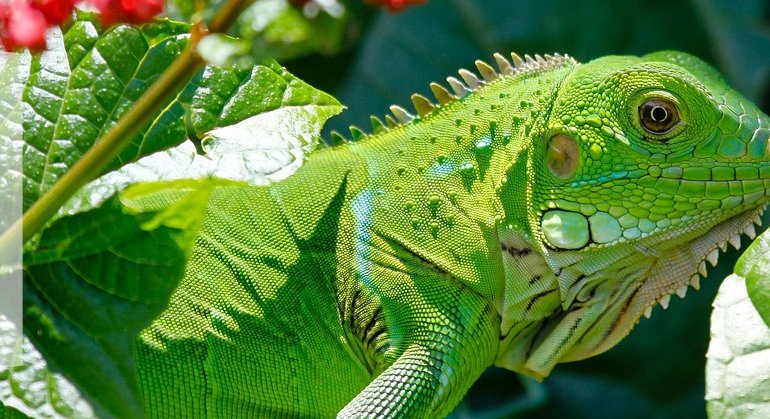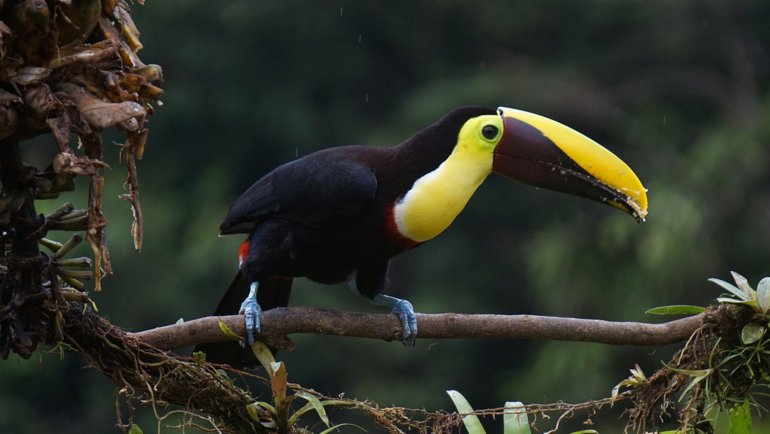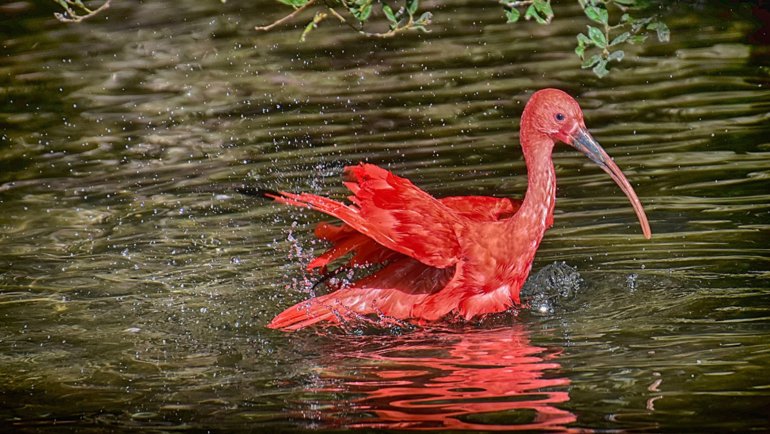Dive into the remarkable world of animals with incredibly thick skin! This unique article showcases twelve animals, each boasting impressive dermal layers, thickened and adapted over time for protection, survival, and thriving in diverse habitats.
From the majestic elephants to the deep-diving humpback whales, the thickness of an animal’s skin can be a fascinating indicator of its lifestyle and environmental adaptations.
Let’s explore these resilient creatures and uncover the secrets behind their thick-skinned existence.
List of Animals With Thick Skin
Elephant

- Scientific name: Loxodonta africana and Elephas maximus
- Type of Animal: Mammal
- Skin Thickness: Up to 1 inch (2.54 cm)
- Where Found: Africa (African elephant) and Asia (Asian elephant)
- Conservation Status: African elephant – Vulnerable; Asian elephant – Endangered
Elephants, both African and Asian, are known for their imposing presence and thick skin. This thick skin serves as a protective barrier against environmental elements, such as thorny vegetation and intense sun.
Despite its toughness, an elephant’s skin is sensitive and contains many nerve endings. Elephants often cover themselves in mud or dust, which acts as a sunscreen and insect repellent, protecting their skin from sunburn and pests.
Socially complex and intelligent, elephants play a crucial role in their ecosystems as mega-herbivores. They facilitate the spread of seeds and create waterholes used by other animals. Elephants have a strong familial bond and are known for their long memories and deep mourning processes for lost loved ones.
Did you know? Elephants’ skin has unique creases and folds, which increase the surface area and help keep them cool by retaining moisture.
Hippopotamus

- Scientific name: Hippopotamus amphibius
- Type of Animal: Mammal
- Skin Thickness: Up to 2 inches (5 cm)
- Where Found: Sub-Saharan Africa
- Conservation Status: Vulnerable
The hippopotamus, or hippo, possesses one of the thickest skins in the animal kingdom. This thick skin is crucial for their life in aquatic environments, protecting them from waterborne pathogens and physical injuries.
Interestingly, a hippo’s skin secretes a natural sunscreen known as “blood sweat,” which gives their skin a unique reddish hue and helps to prevent sunburn and bacterial infection.
Hippos spend much of their time in water, which helps regulate their body temperature and keeps their skin moist. They are one of the largest land mammals and play a significant role in African river and lake ecosystems. Despite their docile appearance, hippos are known for being highly territorial and can be quite aggressive.
Did you know? Hippos are surprisingly agile swimmers and can hold their breath underwater for up to five minutes.
Rhinoceros

- Scientific name: Rhinocerotidae family
- Type of Animal: Mammal
- Skin Thickness: Up to 1.5 inches (3.8 cm)
- Where Found: Africa and Asia
- Conservation Status: Ranges from Vulnerable to Critically Endangered (depending on the species)
Rhinoceroses, commonly known as rhinos, are distinguished by their thick, protective skin, which forms deep folds resembling armor plating. This skin is essential for protection against predators and environmental hazards. Rhinos are known for their large size and distinctive horns, made of keratin – the same material as human hair and nails.
Rhinos are important grazers in their ecosystems, influencing the structure of grasslands and savannas. They have a keen sense of smell and hearing but relatively poor eyesight. Rhinos face severe threats from poaching, driven by the demand for their horns, leading to critical conservation efforts to protect these magnificent animals.
Did you know? Rhino skin can be home to various symbiotic bird species, like the oxpecker, which feeds on ticks and other parasites found on the rhino’s skin.
Manatee

- Scientific name: Trichechus manatus
- Type of Animal: Mammal
- Skin Thickness: Up to 2 inches (5 cm)
- Where Found: Coastal areas of the southeastern United States, West Indies, and West Africa
- Conservation Status: West Indian manatee – Vulnerable; African manatee – Vulnerable
Manatees, often referred to as “sea cows,” are gentle marine mammals known for their thick, tough skin, which is vital for their survival in aquatic habitats. This skin helps protect them from the cold and from injuries that could occur in their underwater environments. Manatees are slow-moving and primarily feed on seagrasses and freshwater vegetation.
These aquatic mammals are crucial for the health of aquatic ecosystems, as they help maintain healthy seagrass beds and control aquatic vegetation growth. Manatees have a low reproductive rate, which, combined with threats from habitat loss and boat collisions, makes conservation efforts vital for their survival.
Did you know? Manatees have no natural predators and are known to be curious and friendly towards humans, often approaching divers and snorkelers.
Whale Shark

- Scientific name: Rhincodon typus
- Type of Animal: Fish
- Skin Thickness: Up to 4 inches (10 cm)
- Where Found: Tropical oceans worldwide
- Conservation Status: Endangered
The whale shark, the largest fish in the ocean, is known for its massive size and thick skin, which is an essential adaptation for its deep-sea habitat. The skin not only provides physical protection but also aids in camouflage with its unique pattern of stripes and spots. Whale sharks are filter feeders, primarily consuming plankton, and are known for their gentle nature.
Despite their size, whale sharks are harmless to humans and are a popular species among divers and marine enthusiasts. They play a vital role in the marine ecosystem, serving as an indicator of ocean health. Conservation efforts are crucial to protect these gentle giants, as they face threats from fishing and habitat destruction.
Did you know? Whale sharks have a unique pattern of spots and stripes on their skin, which is as unique to each individual as a fingerprint is to humans.
Crocodile

- Scientific name: Crocodylidae family
- Type of Animal: Reptile
- Skin Thickness: Up to 0.5 inches (1.3 cm), but very tough
- Where Found: Africa, Asia, the Americas, and Australia
- Conservation Status: Ranges from Least Concern to Critically Endangered (depending on the species)
Crocodiles are known for their armored skin, composed of tough scales and bony plates called osteoderms. This thick, rugged skin provides excellent protection against predators and environmental elements. Crocodiles are apex predators in their habitats, known for their powerful jaws and stealthy hunting tactics. They play a crucial role in maintaining the balance of their ecosystems.
Crocodiles have been around for millions of years, showcasing incredible evolutionary resilience. They are culturally significant in many regions, and often featured in folklore and mythology. Conservation statuses vary among species, with habitat loss and human conflict being primary threats.
Did you know? The temperature at which crocodile eggs are incubated will determine the sex of the hatchlings – warmer temperatures generally produce males, while cooler temperatures produce females.
Walrus

- Scientific name: Odobenus rosmarus
- Type of Animal: Mammal
- Skin Thickness: Up to 1.5 inches (3.8 cm)
- Where Found: Arctic regions of the North Atlantic and North Pacific Oceans
- Conservation Status: Vulnerable
Walruses are easily recognized by their long tusks, whiskers, and substantial bulk. Their thick skin, combined with a layer of blubber, is crucial for insulation in the frigid Arctic waters where they live. Walruses use their tusks for various purposes, including defense, cutting through ice, and getting out of the water. They primarily feed on benthic invertebrates like clams.
Social animals, walruses are often found in large herds on ice floes or beaches. They play an important role in Arctic marine ecosystems but face threats from climate change, particularly the loss of sea ice. Conservation efforts focus on protecting their habitats and mitigating the impacts of global warming.
Did you know? Walruses have an extraordinary ability to slow their heart rate, allowing them to withstand the cold Arctic waters and stay underwater for up to 30 minutes.
Humpback Whale

- Scientific Name: Megaptera novaeangliae
- Type of Animal: Mammal
- Skin Thickness: Up to 6 inches (15 cm) including blubber
- Where Found: Oceans worldwide
- Conservation Status: Least Concern
The humpback whale, a majestic creature of the seas, is renowned for its impressive size and acrobatic breaches. Its skin, combined with a substantial layer of blubber, can be up to 6 inches thick, essential for insulation in cold oceanic environments.
Humpback whales are known for their long migrations, traveling thousands of miles between feeding grounds in polar waters and breeding grounds in tropical or subtropical waters. They are also celebrated for their complex and haunting songs, which can travel great distances underwater and are believed to play a role in communication and mating.
These gentle giants play a vital role in marine ecosystems. As they dive and surface, their movements help to stir up nutrients from the deep, supporting phytoplankton growth which in turn sustains many marine life forms. Humpback whales were once heavily hunted, but conservation efforts have helped their populations to recover in many areas.
Did you know? Humpback whales have unique patterns on their tails, or flukes, which are like fingerprints and can be used to identify individual whales.
Narwhal

- Scientific Name: Monodon monoceros
- Type of Animal: Mammal
- Skin Thickness: Up to 1 inch (2.5 cm) excluding blubber
- Where Found: Arctic waters
- Conservation Status: Near Threatened
Narwhals, often called the ‘unicorns of the sea,’ are distinguished by their long, spiral tusk, which is actually an elongated upper left canine tooth.
Beneath their mottled grayish skin lies a thick layer of blubber, crucial for insulation in the freezing Arctic waters where they reside. Narwhals are primarily found in the Canadian Arctic and Greenlandic waters, where they navigate under sea ice. They feed on fish, shrimp, and squid in deep waters, often diving deeply to reach their prey.
These elusive marine mammals lead a mysterious life beneath the ice, with many aspects of their behavior still unknown. Narwhals are social animals, often found in groups, and are crucial to the indigenous communities for whom they hold cultural and subsistence value. The changing climate, however, poses a significant threat to their icy habitat.
Did you know? Narwhals’ tusks can grow up to 10 feet long and are filled with nerve endings, potentially helping them sense changes in their environment.
Elephant Seal

- Scientific Name: Mirounga (Genus)
- Type of Animal: Mammal
- Skin Thickness: Up to 2 inches (5 cm) excluding blubber
- Where Found: North Pacific for Northern Elephant Seals, Southern Oceans for Southern Elephant Seals
- Conservation Status: Least Concern (Northern Elephant Seal), Not Evaluated (Southern Elephant Seal)
Elephant seals, named for their large size and males’ distinctive snouts resembling an elephant’s trunk, have thick skin and an extensive layer of blubber. This adaptation is crucial for surviving in the frigid waters of the Pacific Ocean and Southern Oceans.
Elephant seals are known for their extreme diving abilities, diving to depths over 5,000 feet and holding their breath for up to two hours while hunting for food like fish and squid.
These seals spend most of their lives in the ocean but return to land to breed, molt, and rest. Male elephant seals are known for their fierce battles over mating rights, using their size and weight to assert dominance. Despite their cumbersome appearance on land, they are agile and efficient swimmers.
Did you know? The Southern elephant seal is the largest of all seal species, with males weighing up to 8,800 pounds (4,000 kg).
Harp Seal

- Scientific Name: Pagophilus groenlandicus
- Type of Animal: Mammal
- Skin Thickness: Approximately 1 to 1.5 inches (2.5 to 3.8 cm) including blubber
- Where Found: North Atlantic and Arctic Oceans
- Conservation Status: Least Concern
Harp seals, named for the harp-shaped pattern on the back of the adults, are well-adapted to the icy waters of the Arctic and North Atlantic oceans. Their skin, along with a substantial layer of blubber, is crucial for insulation in these frigid environments.
This adaptation allows them to maintain body heat and survive in extreme cold. Harp seals are known for their seasonal migrations following the movement of pack ice, which is essential for their breeding and molting processes.
Harp seals are social animals, often seen in large groups. They feed on a variety of fish and crustaceans. The pups, known for their white, fluffy coats, are particularly dependent on their mother’s fat-rich milk for rapid growth. Despite facing threats like climate change and hunting, their populations are currently stable, making them one of the more numerous seal species.
Did you know? Harp seal pups are born with a white coat that helps them blend in with the ice, a crucial adaptation for avoiding predators.
Orca (Killer Whale)

- Scientific Name: Orcinus orca
- Type of Animal: Mammal
- Skin Thickness: Up to 4 inches (10 cm) including blubber
- Where Found: All oceans, from the Arctic and Antarctic to tropical seas
- Conservation Status: Data Deficient
Orcas, also known as killer whales, are the largest members of the dolphin family and are distinguished by their striking black-and-white coloring.
Their skin, combined with a thick layer of blubber, can be up to 4 inches thick, providing insulation in cold waters and aiding in buoyancy. Orcas are apex predators, known for their diverse diet which includes fish, seals, and even large whales. They are highly social animals, living in complex matrilineal family groups known as pods.
Each orca pod has unique vocalizations, hunting techniques, and social structures, indicating a high level of cultural diversity. Orcas are found in all of the world’s oceans, showcasing remarkable adaptability to different marine environments. Their intelligence, social structure, and role as top predators make them vital to marine ecosystems.
Did you know? Orcas have been known to exhibit cross-species cooperative hunting techniques, sometimes teaming up with other ocean predators like false killer whales for hunting.
Why Do Some Animals Have Thick Skin?
The animal kingdom is full of diverse adaptations, with thick skin being one of the most intriguing. Several species have evolved to have thick skin, and understanding the reasons behind this adaptation sheds light on how animals survive and thrive in their environments.
Protection: One of the primary functions of thick skin is protection. For many animals, a thicker epidermis acts as a barrier against predators, environmental hazards, and parasitic infections. For example, the tough hide of a rhinoceros or elephant not only protects them from thorns and rough vegetation but also makes it harder for predators to inflict damage.
Temperature Regulation: Thick skin can play a crucial role in an animal’s ability to regulate its body temperature. In marine mammals like whales and seals, a combination of thick skin and blubber helps to retain body heat in cold ocean waters. This insulation is crucial for their survival in frigid environments.
Buoyancy and Swimming: For aquatic animals, thick skin and underlying blubber can aid in buoyancy, allowing them to float and swim more efficiently. This adaptation is particularly important for large marine mammals that spend most of their lives in water.
Camouflage and Social Interaction: In some species, the texture and color of thick skin can serve as camouflage, helping them blend into their surroundings and avoid predators. Additionally, in animals like elephants, the unique patterns and textures of their skin can play a role in social interactions and communication.
Water Retention: In arid environments, thick skin can help animals retain water and prevent dehydration. This adaptation is crucial for survival in habitats where water is scarce.
Final Thoughts
In conclusion, thick skin is an evolutionary adaptation that serves multiple functions, from protection and insulation to buoyancy and camouflage. It highlights the incredible ways in which animals have adapted to their environments, ensuring their survival in diverse and sometimes harsh habitats.





